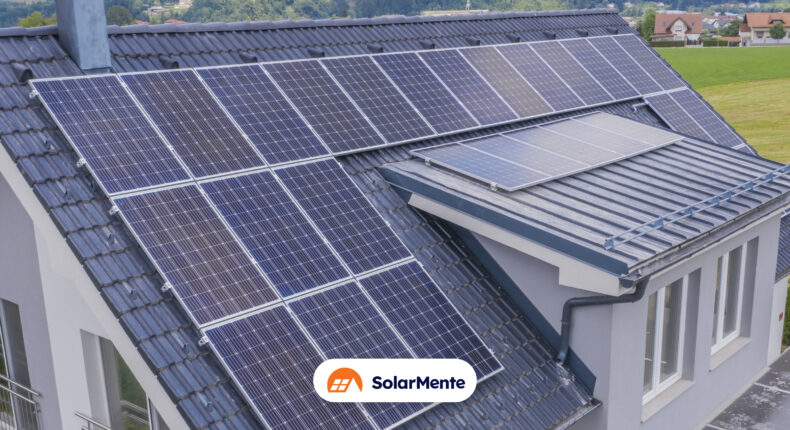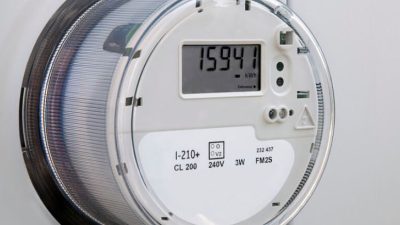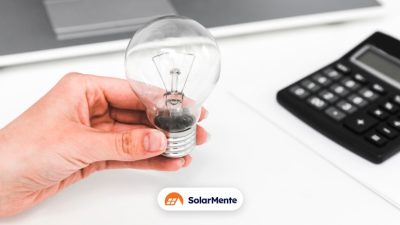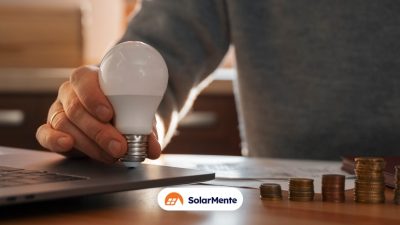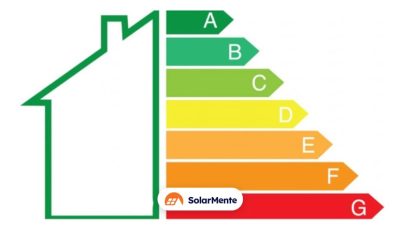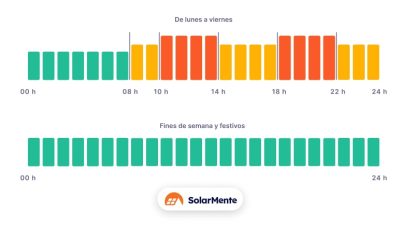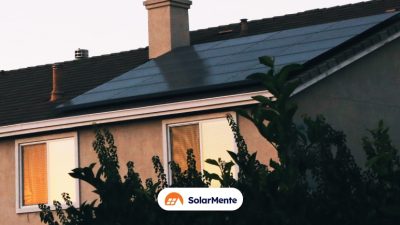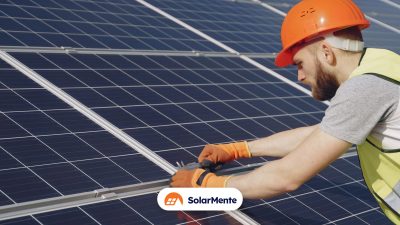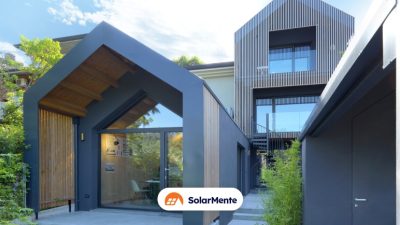Once we are clear about our commitment to solar energy, it is important to consider the orientation and inclination of the solar panels to maximise the performance of the photovoltaic system.
These are two essential factors for optimising the use of sunlight, with a great impact on both energy production and savings on your electricity bill.
The ultimate goal is for our roof to provide us with the greatest amount of energy to be consumed in our home.
If you want to know how to make your investment profitable, in this article we tell you which is the best orientation and inclination for solar panels in Spain.
What is the best orientation for solar panels?
The optimum orientation for solar panels in Spain is towards the south (azimuth angle of 180º). In this way, the photovoltaic system receives the maximum solar radiation during the day and this improves the yield of the system.
Note: The azimuth is the angle that makes up the vertical circle that passes through a point on the planet Earth or celestial sphere (taking north as a reference).
However, there are certain situations in which it is not possible to orient the solar panels towards the south. In these cases, the right orientation is sought in order to avoid high system losses.
And remember: it is important to take into account the shadows that may be cast on your system and reduce its efficiency.
How do I find out the orientation of my home?
You already know the ideal location for your home, but how can I find out the orientation of my roof?
It’s simple. Follow these steps on Google Maps:
-
Open the application
-
Locate your home
-
Place the orange monicker right on your house.
-
Stand in the position where your facade is facing.
-
Now, look at the compass in the bottom right corner. The red colour symbolises north.
However, if you prefer to speed up the process and make sure you have taken the right references, you can always ask us for advice.
Think about it. You don’t lose anything and you save time.
What happens if my roof does not face south?
If your house does not face south, don’t worry. For example, if it faces west and you want to maximise your PV production, you need to analyse when your energy consumption will be highest.
By this we mean that, if your peak consumption takes place in the early hours of the day, it is advisable to orientate them towards the east, as the sun rises here. Therefore, more energy is used if the panels are oriented in this direction.
Otherwise, if our main consumption takes place in the late hours of the day, the west will be the appropriate orientation for our system.
In short, although they do not produce energy in the same way as if they are facing south, it is still a good alternative because the perceived energy savings will continue to rise and the investment made will also have been a success.
Other options are also being tried out and are gaining more and more popularity in Europe: joint orientation of solar panels to the east and west.
In any case, this is a variant recommended for flat roofs such as industrial warehouses or buildings.
One last case remains to be analysed: north-facing panels.
What happens in this case?
The truth is that this situation would have to be analysed, but, as a general rule,the house would not receive enough solar radiation to cover its energy needs.
Therefore, energy production would be lower and labour costs would increase significantly.
In short:
-
Respecting the orientation of the solar panels guarantees optimal energy production for the house.
-
On the other hand, an inappropriate orientation wastes the collection potential of the solar system and even affects the panels to the point of disabling them.
How shading affects energy production
Another relevant factor when installing solar panels is shading.
It may seem silly, but it is an obstacle like any other that influences the determination of the orientation of the solar panels.
As we do not want to reduce electricity production to below normal levels, the PV panels should be in a location and position that is not affected by shading, or at least as little as possible. Because partial shade also limits the solar energy reaching our house.
How to avoid being affected by shadows?
Consider all times of the day and seasons of the year to see if this can become a problematic factor.
The inclination of solar panels
The inclination of solar panels in Spain varies between 20 and 40 degrees and is determined by the latitude of the geographical area.
What determines the inclination depending on the province we are in?
Well, the closer you are to the equator or parallel 0º, the lower the angle of inclination of the solar panels will be as the rays fall perpendicularly. Therefore, this means that in Spain we have the following scales:
-
In areas located to the north, the ideal inclination of solar panels is an angle of 40º.
-
For southern areas, the best angle is between 20-25º.
However, the range where most Spanish households are located is between 20 and 35 degrees. There may be some loss of performance, but nothing significant, which, at the end of the day, allows us to save on costs related to the structure.
In any case, you should be aware of your electricity consumption throughout the year. Do you consume more in summer or winter?
This will be a factor in the tilt of your solar panels and you need to know how to read and interpret your electricity bill.
The implications of the weather
Then there is the weather. The position of the sun varies from season to season and plays an important role in determining the optimum angle.
For example, if you live in a geographical area with constant fog in the mornings, you should consider the tilt that allows you to optimise production in the late afternoon.
Let’s look at another case.
In areas that receive frequent snowfall, it is recommended that solar panels are installed on steeply sloping roofs so that the solar panels continue to operate in winter and, at the same time, the snow slides off and does not accumulate on the surface of the system.
The importance of optimal orientation and inclination of the solar panels
The orientation and inclination of the solar panels must be in the right position if we want to generate enough energy to cover the needs of our household.
They are influenced by various factors such as location, availability of shade and climate. A house in Madrid does not have the same potential as in cities such as Oviedo or Santander.
>>If you are looking to switch to green energy to increase your financial savings, try our self-consumption calculator.
A tool to check all the benefits of solar energy. In addition, we help you maximise the performance of your installation to produce the amount of electricity needed for your home, all year round!

